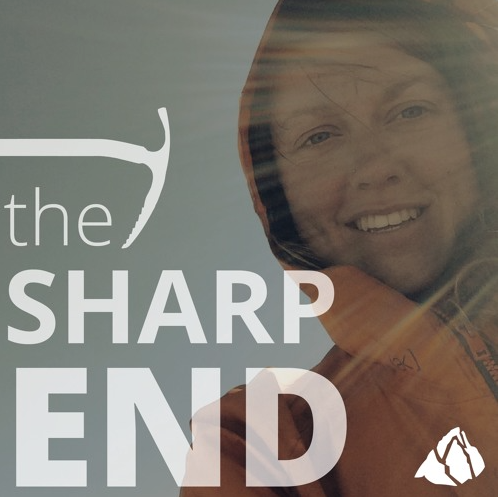Unroped Fall — Loose Rock
Arizona, Prescott, Granite Dells, Corndog Wall

The scene of the rockfall accident at the Granite Dells. Note the crushed crash pad and shattered debris. The rocks were dislodged by a climber from the area on the cliff marked by the yellow box. To give a sense of scale, the figure in the red jacket is six feet, two inches tall. Photo: Melissa Wright
On September 17, my boyfriend, Adam, my son, Tyler, our friends Chase and Megan, and I, Melissa Wright, were climbing at the Corndog Wall. Adam was at the top of a route, giving a refresher to Megan on cleaning an anchor. I was at the bottom. We saw two climbers approach with a crash pad. To my knowledge, there were no bouldering routes on our wall, so our assumption was they would move on. The young men were part of a large group who attended nearby Embry-Riddle Aeronautical University. The rest of their group—at least eight more—were sport climbing nearby.
Adam saw one of the guys free solo up a 20-foot-high rock face to our right. The area where they were climbing had no established routes listed on Mountain Project. As the guy started downclimbing, Adam yelled to him that there was an easy walk-off. The young man said he was fine and that the walk-off was too far.
Once the first guy was down, his friend “Bill,” began to climb. He also was unroped. “Bill” was wearing a bike helmet, and we later discovered this was roughly his third time climbing. I heard the sound of a massive rockfall, followed by screaming. “Bill” appeared to have been holding on to a large block that pulled out.
We called 911. I came up to the scene and saw “Bill” sitting upright. There was a large boulder sitting on the crash pad along with a scattering of smaller rocks. I saw blood on the wall, and I could see all the muscle and bone in his left calf. His right femur was broken, and he was missing most of the skin on the backside of his thigh. I ran to my pack and grabbed my first-aid kit and some clothing to treat the wounds, as it was obvious the gauze we had would not be enough. Adam made his way down, evaluated the scene, deemed it safe from further rockfall, put on gloves, and began applying pressure to “Bill’s” wounds.
After speaking with rescue services, I gave the young guys a task to cover every entrance and junction to guide the EMTs, as it was unclear what route they would take. It only took 20 minutes for the EMTs to arrive.
ANALYSIS
Crowding, loose rock, unroped climbing on new terrain, inexperience—all these factors played into an accident that was easily avoidable.
Wright also notes, “Their first-aid kits were inadequate and two of them offered tourniquets. They wanted to move ‘Bill’ into shade. Based on the severity of his injuries, moving him could have severed an artery. It’s one of the few times I didn’t have my Garmin. I never adventure without it now.” (Source: Melissa Wright.)

